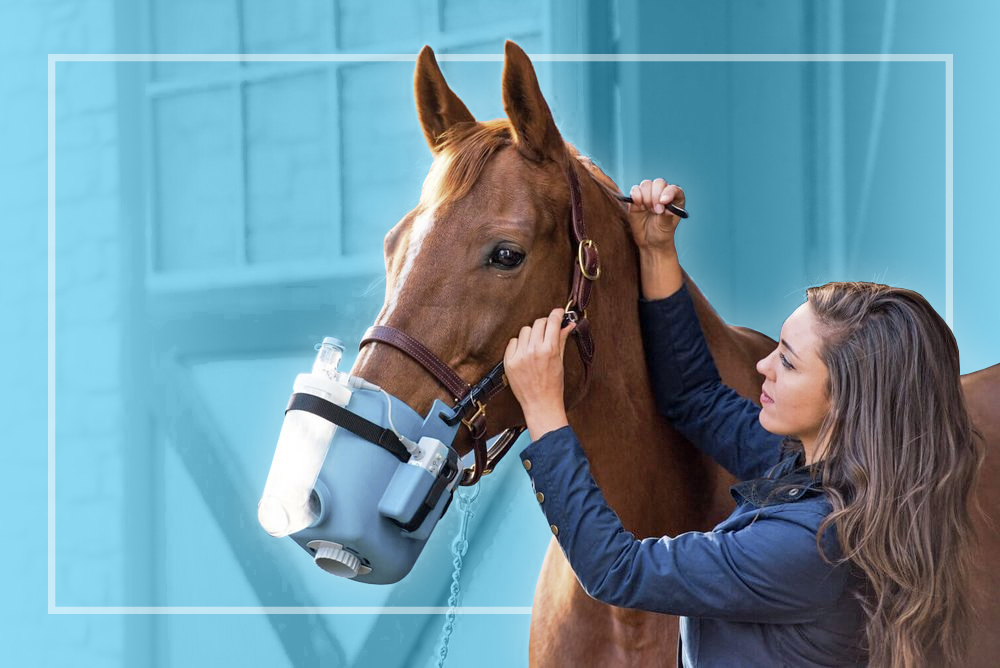By Stephanie Davis, DVM
Associate at Clarke Equine: Three-Day Eventer;
Barn Manager - Clover House, VA
At this point in the management of airway diseases of the performance horse, I think we all know that without environmental changes, our medications will have little effect. However, along with those environmental adjustments, available medications can be very helpful in the management of these horses.
The most commonly used medications are corticosteroids (to reduce the inflammation in the airway), and bronchodilators. Not only do the steroids reduce inflammation, they improve the airway function by decreasing smooth muscle contraction and reducing mucus production. The bronchodilators can also relieve obstruction by decreasing smooth muscle contraction.
Historically, these medications are given systemically. However, there are advantages to medicating the airways directly by using inhalation therapy. When inhaling the medication, the horse receives a high concentration of the drug directly to the lung. This way, less medication can be used (as opposed to systemic route) and the animal is less likely to suffer side effects from those medications.
In the past, using inhalation medication was difficult simply based on the delivery system. Older style nebulizers were equipped with a compressor that would make a lot of noise, potentially scaring the horse. Additionally, they need to be plugged into an outlet for power. Newer systems have taken all of these issues into consideration. Not only does the Flexineb® equine nebulizer have no need for a compressor to plug in, but it is also completely silent and much more comfortable for a horse to wear. It fits on the head like a muzzle, making it much less intimidating for the horse.
So, what I recommend to my performance horse owners is to first modify the environment. The horses need to get as much turnout as possible and have a very well ventilated stall when kept indoors. Additionally, bedding for the stall should be as “dust free” as possible. There are many products that have decreased dust such as recycled cardboard, chopped paper bedding, and pine pellets. The hay should be steamed whether it is fed inside the barn or outside as the mold spores and allergens will be imbedded in the hay no matter where it is fed. If environmental management does not improve the condition and the symptoms persist (nasal discharge or cough), we treated by using the Flexineb® nebulizer to deliver the desired medications. With a performance horse, it is important to always keep up-to-date with the drug and medication rules that the horse competes under. When nebulizing a horse that needs to compete, the horse can also be treated with saline to flush the airway when medication (steroids and bronchodilators) cannot be used because of an upcoming competition.
Published October 2013.



